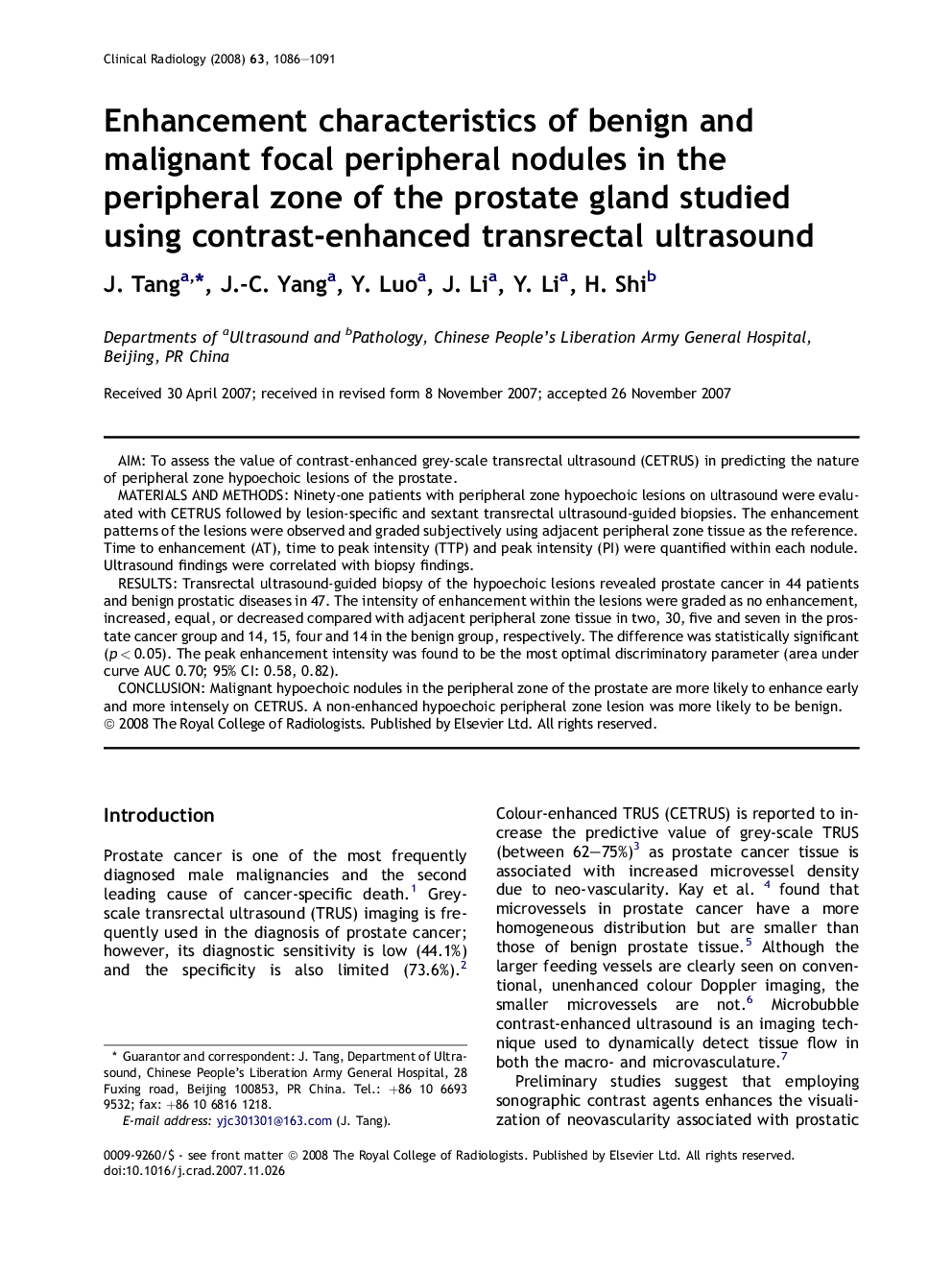| Article ID | Journal | Published Year | Pages | File Type |
|---|---|---|---|---|
| 3984265 | Clinical Radiology | 2008 | 6 Pages |
AimTo assess the value of contrast-enhanced grey-scale transrectal ultrasound (CETRUS) in predicting the nature of peripheral zone hypoechoic lesions of the prostate.Materials and MethodsNinety-one patients with peripheral zone hypoechoic lesions on ultrasound were evaluated with CETRUS followed by lesion-specific and sextant transrectal ultrasound-guided biopsies. The enhancement patterns of the lesions were observed and graded subjectively using adjacent peripheral zone tissue as the reference. Time to enhancement (AT), time to peak intensity (TTP) and peak intensity (PI) were quantified within each nodule. Ultrasound findings were correlated with biopsy findings.ResultsTransrectal ultrasound-guided biopsy of the hypoechoic lesions revealed prostate cancer in 44 patients and benign prostatic diseases in 47. The intensity of enhancement within the lesions were graded as no enhancement, increased, equal, or decreased compared with adjacent peripheral zone tissue in two, 30, five and seven in the prostate cancer group and 14, 15, four and 14 in the benign group, respectively. The difference was statistically significant (p < 0.05). The peak enhancement intensity was found to be the most optimal discriminatory parameter (area under curve AUC 0.70; 95% CI: 0.58, 0.82).ConclusionMalignant hypoechoic nodules in the peripheral zone of the prostate are more likely to enhance early and more intensely on CETRUS. A non-enhanced hypoechoic peripheral zone lesion was more likely to be benign.
